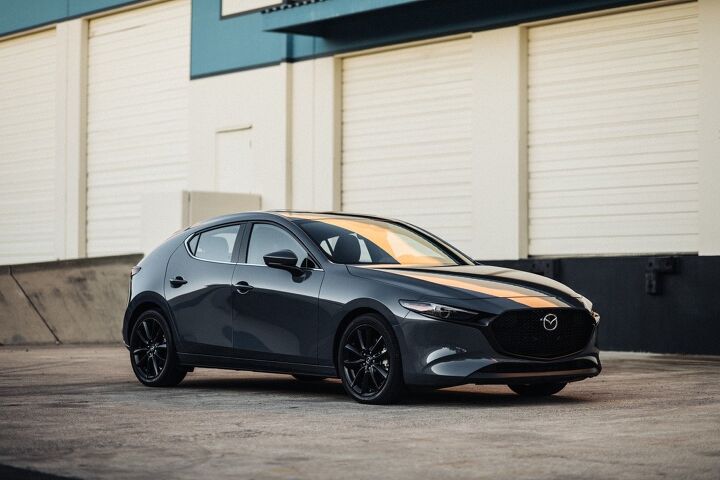The Cost of Going Upscale: Mazda Mulls Its Compact Car Strategy

One of the bigger stories this year, albeit one that occurred mostly in the background of splashier news, concerned a fun-to-drive compact car that did pretty well for itself over the past decade. For 2019, that car got a makeover and a push upmarket, aligning it more closely with other models in the lineup. That car was the Mazda 3 — and the 2019 model year brought big changes not only to its content, but also its price.
Gone was the American-market’s base 2.0-liter engine and most of the model’s manual transmission availability, and these omissions played an obvious role in inflating the model’s entry price by roughly three grand. Looking back on the sales decline that marked the new 3’s entry to the market, Mazda’s leadership is expressing regret.
Speaking to Automotive News, Mazda CEO Akira Marumoto’s Christmas wish seems to be the ability to turn back the clock.
“The price jump for the entry-level could have been too large — that is something we are reflecting on right now,” he said. “The people in that market are pretty price-conscious.”
Despite greater standard content, two bodystyles, and the (new) option of all-wheel drive, Mazda 3 sales dived in the U.S., failing to recover in the months following its introduction. While Mazda stands to earn more profit for each model sold, the reduction in volume is significant and cannot be ignored. At the halfway point in the year, 3 sales were down 20.3 percent. Through November, volume declined by 19.9 percent.
As it seeks to stand apart from the likes of Honda and Toyota, Mazda’s premium strategy has hit a snag in the 3. While the model’s updated Kodo design language and fairly ritzy cabin is capable of turning heads, not enough buyers are shelling out the boosted bucks for one.
“I asked everyone to achieve three things. We’ve increased the pricing slightly while decreasing incentives. But our sales volume hasn’t reached the targeted level,” Marumoto said. “So, we achieved only two of the three.”
Mazda’s problem isn’t solely the result of its pricing strategy. As the compact car segment dwindles, the ability of any automaker to besting the previous year’s standing is growing ever more difficult to achieve.
In Canada, Mazda opted for a different strategy. The base 2.0L was retained, as was the manual transmission on several low-tier trims. Entry price remained much the same as before. Year-to-date sales through November? Down 19.7 percent.
It’s something of a Catch-22 for Mazda. If the company stayed the previous course and positioned the 3 as a sporty also-ran challenger to the Civic and Corolla, the far greater volume and visibility of its rivals could relegate it to the back of the pack. Do something different by moving forward with a premium strategy, and the same could occur.
And Mazda yearns to be different, as it’s part of the brand’s appeal.
“We can be unique, in terms of product, technology, pricing and customer experience. If we don’t do that and do the same thing as big players, I’m afraid it will be hard for Mazda to survive,” the CEO remarked, adding that the 2020 model year brought additional content to low-end 3s in a bid to boost appeal.
Without reducing the model’s entry price, Marumoto said, “We’re going to add easy-to-understand value.”
[Images: Mazda, Chris Tonn/TTAC]

More by Steph Willems
Latest Car Reviews
Read moreLatest Product Reviews
Read moreRecent Comments
- CoastieLenn Could be a smart move though. Once the standard (that Tesla owns and designed) is set, Tesla bows out of the market while still owning the rights to the design. Other companies come in and purchase rights to use it, and Tesla can sit back and profit off the design without having to lay out capital to continue to build the network.
- FreedMike "...it may also be true that they worry that the platform is influencing an entire generation with quick hits of liberal political thought and economic theory."Uh...have you been on TikTok lately? Plenty of FJB/MAGA stuff going on there.
- AZFelix As a child I loved the look and feel of the 'woven' black vinyl seat inserts.
- Aja8888 Maybe he's putting the cost savings into Cybertruck production?
- Kwik_Shift_Pro4X The dominoes start to fall...




































Comments
Join the conversation
I wonder which brand is considered more premium Lincoln or Mazda? In Russia and China it would be Lincoln. How about USA and Canada?
$#!+box